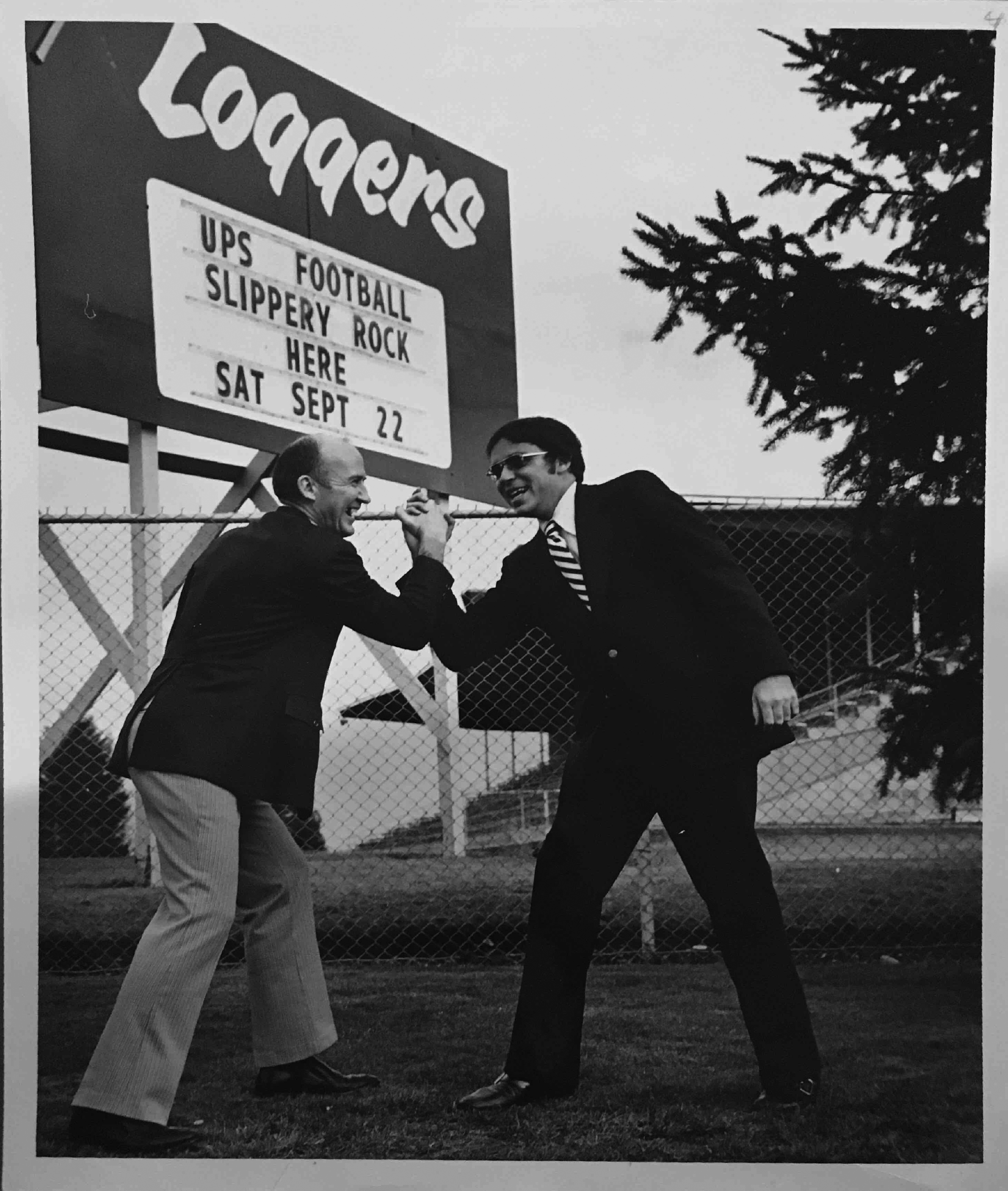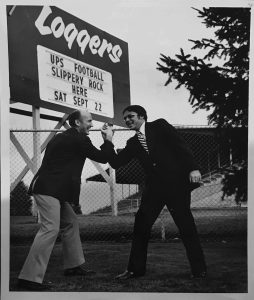
By Gabi Marrese

According to the Rock Mystique, Beano Cook, ABC-TV/ESPN college football analyst, said, “a presidential candidate in the New Hampshire primary would love to have the name recognition of Slippery Rock.”
Slippery Rock University of Pennsylvania is located 50 miles north of Pittsburgh off of Interstate 79. According to a 2010 census, the city of Slippery Rock has a population of 3,625. The University has over 8,500 students currently on its 660-acre campus. They are known as The Rock.
“I went to a lot of UW Husky Football Games growing up and in high school and they would always give the Slippery Rock score over the PA system and everyone would laugh because of the weird name,” William Linnenkohl, Class of 1976, said.
“We played strictly Northwest teams, the Evergreen Conference, we began looking for other schools. We started with some teams from California and Hawaii. I just got the idea that it would be fun to bring them out. We made the contact and they were more than happy to consider coming out. People just loved the thought of The Rock and The Sound,” Doug McArthur, former athletic director, said.
An article in the Nov. 3, 1972 edition of The Trail titled “1973 Slippery Rock Game no Joke” describes the scheduling of the games a year in advance and the opponents’ strong season record.
The football teams’ 1973 started off with a lot of new members, coaches, announcers and opponents. Jerry Howarth announced his first game for the loggers alongside McArthur. Howarth then moved on to be the voice of the Toronto Blue Jays.
After a 7-3 record the previous season under head coach Bob Ryan, the Loggers welcome new head coach Paul Wallrof along with new first-year students and transfers. Two important transfer students were Bill Linnenkohl, who transferred from Air Force Academy, and Ron Reeves, who transfered from the Washington Huskies. The big game was scheduled for Sept. 22, 1973.
The Rocket, the Slippery Rock University school paper, announced the broadcast options for those where were not able to make 3,000 mile journey to the game.
“The game was originally scheduled to take place in the University of Washington Husky Stadium. It is now to be played at Baker Stadium on the Puget Sound campus where a capacity crowd of 7,500 is expected to be on hand,” said The Rocket article titled “WNFT Broadcasts From Puget Sound.”
During the preparation for the game, the Loggers knew they were going to have to keep their mistakes to a minimum and show no weaknesses. The Rock’s starting center, Ed Seiwell, was a 6’4” senior that weight 250 pounds. Logger defense had a tough job throughout the game but held strong.
“Compared to the rest of our games, I thought it was one of the hardest hitting football games of the season and one of the hardest that I can remember back that era. It also featured two of the better defensive teams around,” McArthur said.
Dann Tillinghast, the Armchair expert, recapped the game in The Trail on Sept. 28, 1973, saying, “Time after time the defense shone. Take the second quarter, for instance. A UPS fumble gave Slippery Rock the ball on the Logger 14 yard line. Three plays later, the ‘Big Green’ had to settle for a field goal. It failed.”
The defense wasn’t the only strong part of the Loggers’ team; the offense had lots of success with the rush.
“Bruising fullback Scott Hansen led the UPS rushing attack with 51 yards in 18 carries. And from the beginning, when he ran back a punt 32 yards, Robin Hill proved to be a thorn in the side of the ‘Big Green,’” Tillinghast said.
“One thing I wish that I could have heard. That PA announcer at Husky Stadium booming out that day: ‘Final score from Tacoma, Slippery Rock 6, Puget Sound 13!’ No doubt the Husky crowd let out a loud roar of approval for the local team,” Linnenkohl said.
